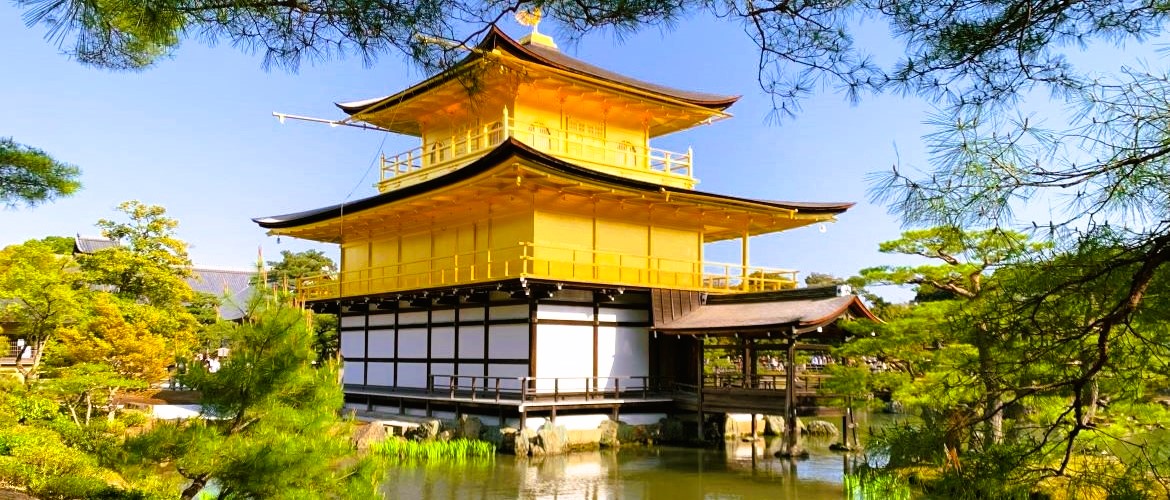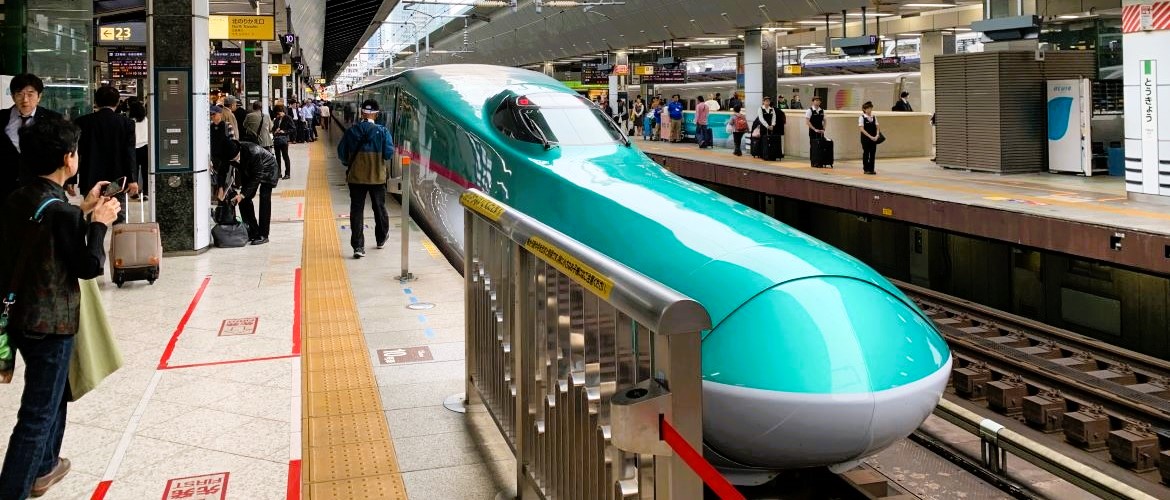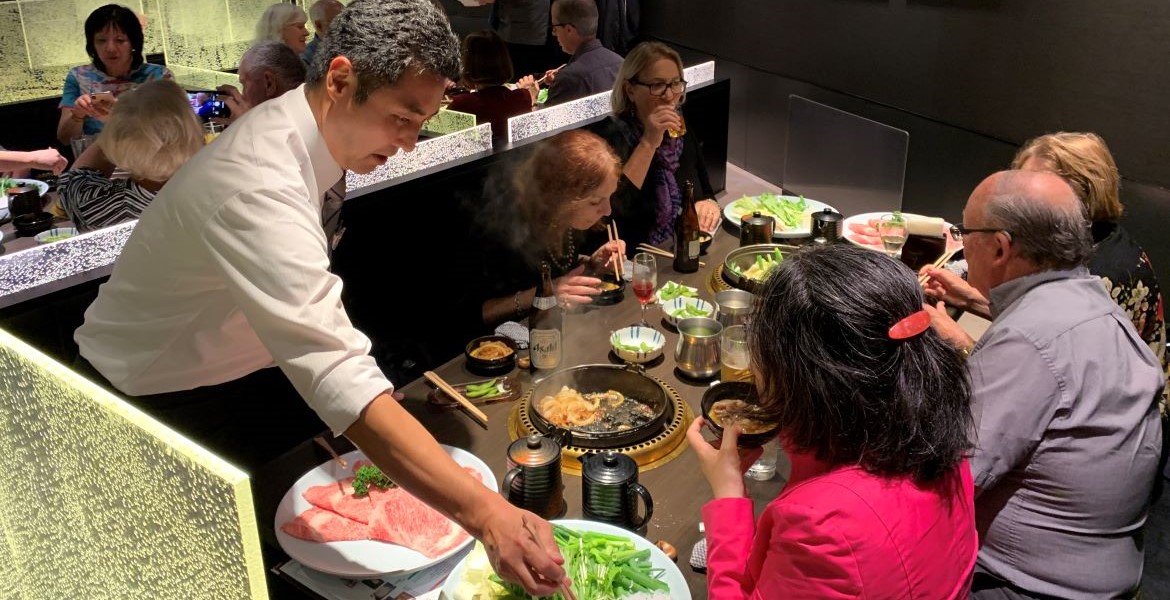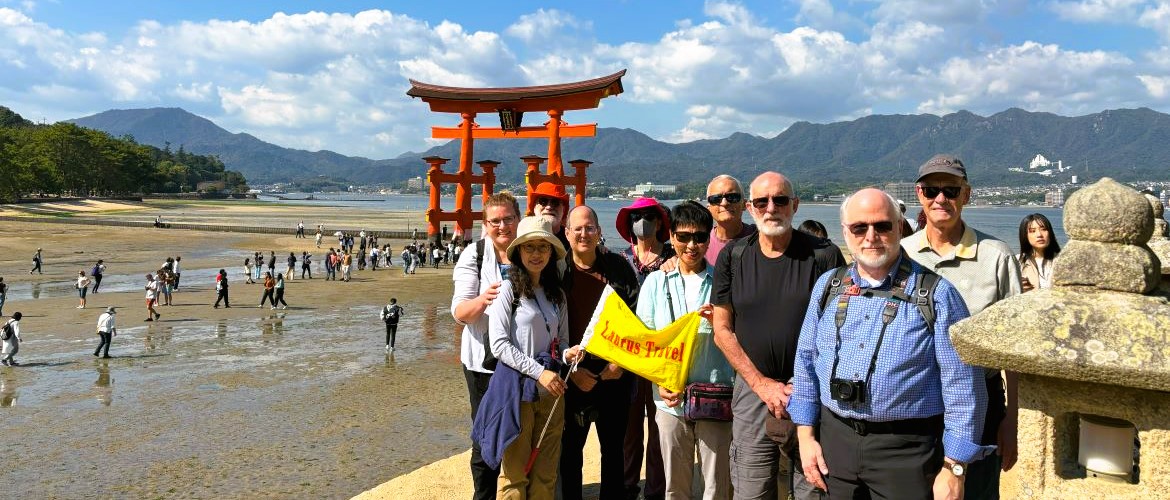Tokyo – Kyoto – Hiroshima – Miyajima – Okayama – Osaka

Experience the highlights of Japan on this 12-day Affordable Japan tour designed for active travelers. This small-group itinerary takes you from Tokyo’s bustling streets to Kyoto’s historic temples, Hiroshima’s poignant memorials, and Osaka’s vibrant culture. With inter-city travel by bullet train, guided sightseeing, and ample free time for personal exploration, this tour offers a balanced mix of structured activities and independent adventures—all while keeping the experience budget-friendly.
A Note on Fitness & Luggage
This affordable Japan tour uses a combination of chartered bus, taxi and public transit to get around – read the itinerary for details. The style is very active and requires the participants to walk up to 8 kilometres (5 miles) a day at a brisk pace. In addition, each participant is allowed to bring only one small suitcase, which must qualify as carry-on luggage (21.5″ x 9″ x 15.5″) per major commercial airlines. This is necessary because taxis for transfers between hotels and train stations have limited space for luggage.
If you can live with the above restrictions, you will have a fantastic time on this budget-friendly Japan tour.

Important Features
- Small group size – 11 maximum
- Experienced professional guide
- Inter-city travel by shinkansen bullet train
- No shopping stops
- Daily breakfast
- One lunch (BBQ) in a quality restaurant
- One dinner (sukiyaki style) featuring premium Japanese beef
Meal Code: B = breakfast / L = lunch / D = dinner

Day 1/Mon: Departing Home City
Depart for Tokyo and lose a day upon crossing the International Date Line.
Day 2/Tue: Arrival in Tokyo
Welcome to Tokyo! Please make your way to the hotel on your own. Detailed information on how to get to the hotel will be provided in the final update two weeks before departure. Please expect to spend around US$25 per person for the transfer.
Day 3/Wed: Tokyo (B/L)
Tokyo, literally meaning “eastern capital” and officially named Tokyo Metropolis, is one of the most populous mega-cities in the world with a population of 14 million. Formerly known as Edo, the city has been the de facto seat of the Japanese government since 1603 when shogun Tokugawa Ieyasu chose the city for his headquarters. The shogun (general) was a hereditary commander ceremoniously appointed by the emperor but held real power over the country during the shogunate period between 1192 and 1867. Edo was renamed Tokyo after Emperor Meiji moved his seat from Kyoto in 1868 when the last shogun was forced to return power to the imperial court. The city covers an area of 2,187 square kilometres following the merger in 1943 of the city of Tokyo and Tokyo Prefecture.
Our full-day sightseeing begins at Senso-ji, the oldest Buddhist temple in Tokyo dating back to 628.
We then drive through ritzy Ginza shopping district to arrive at the plaza in front of the Imperial Palace (the palace itself is closed to tourists) for a stroll.
After lunch, we tour the grounds of the tranquil Meiji Jingu, a Shinto shrine dedicated to Emperor Meiji (1852 -1912) and his wife.
We end the day with a visit to the observation deck inside the Tokyo Metropolitan Government Building in Shinjuku. On a clear day, the visitor should be able to see Mount Fuji located 84km to the west.
Today’s mode(s) of transportation: chartered bus
Day 4/Thu: Tokyo (B)
Today is set aside for you to explore on your own.
Our recommendations include Ginza and Akihabara shopping districts, which even non-shoppers would find exciting. Also recommended are the top-rated Tokyo National Museum and the adjacent National Museum of Western Art located at Ueno Park.
Day 5/Fri: Tokyo – Kyoto (B)
This morning we ride the Shinkansen bullet train (Nozomi #121, 09:00/11:15) to Kyoto.
Nicknamed “City of Ten Thousand Shrines”, Kyoto (literal translation: capital city) served as Japan’s capital for more than one thousand years before the imperial court moved to Tokyo in 1868 with the onset of the Meiji Restoration (1868 to 1912, a historical period associated with the emergence of Japan as a modernized nation). Kyoto is a scaled replica of the Chinese Tang Dynasty’s capital Chang’an, present-day Xi’an. The Tang Dynasty (618 – 907) was a golden era in Chinese history and a time when Japanese adoption of Chinese culture reached its peak. Kyoto today, with a population of 1.5 million, forms a major part of the Kyoto-Osaka-Kobe metropolitan area.
Our sightseeing today begins at Arashiyama (Storm Mountain) area, where we visit Tenryu-ji Temple and the Bamboo Forest. Located on the western outskirts of Kyoto, Arashiyama is famous for its immense natural beauty as well as its historical and cultural prominence due to the large number of well-preserved ancient Buddhist temples.
We then explore the famous Kinkaku-ji (Temple of Golden Pavilion). This is a Zen Buddhist temple and one of 17 locations comprising the Historic Monuments of Ancient Kyoto World Heritage Site.
Today’s mode(s) of transportation: taxi, bullet train & chartered bus
Day 6/Sat: Kyoto (B)
Free day to explore on your own.
Full-day Optional Tour (09:00 – 17:00, US$195/person)
The day tour by public transit takes in Nijo Castle, Kiyomizu-dera and Gion.
The magnificent Nijo Castle is the site that witnessed the commencement and ending of the Tokugawa shogunate (1600 -1868).
Kiyomizu-dera is a Buddhist temple and part of the Historic Monuments of Ancient Kyoto UNESCO World Heritage site. Its veranda provides stunning views of the city.
Gion, located within walking distance of Kiyomizu-dera, is a historical district of art and entertainment that gave birth to the famous geisha culture. With explanations from the guide, you’ll acquire a good understanding of the geisha culture, the fabled performing art known as kabuki, and some other aspects of important Japanese cultural traditions.
Day 7/Sun: Kyoto (B)
Free day to explore on your own.
Our recommendations include Fushimi Inari Shrine (good for hiking), Ginkaku-ji (Silver Pavilion Temple), Kyoto National Museum, and Kyoto Imperial Palace (subject to frequent closure).
Day 8/Mon: Kyoto – Hiroshima (B)
After breakfast, we travel to Hiroshima by bullet train (Nozomi 109, 09:33/11:11).
Hiroshima, literally meaning ‘broad island’, is the capital of Hiroshima Prefecture and the largest city in the Chugoku region with a population of 1.2 million. Hiroshima is best known as the first city in history to be targeted by a nuclear weapon when the United States Army Air Forces dropped an atomic bomb on the city (and later on Nagasaki) at 8:15 a.m. on August 6, 1945, near the end of World War II. The highlight in Hiroshima, understandably but sadly, is the Peace Memorial Park which includes the Peace Memorial Museum, and the Atomic Bomb Dome that once served as the industrial promotion hall of the local prefect.
After dropping off luggage at the hotel, we visit the Peace Memorial Memorial Park complex. This includes two hours in the museum onsite.
Today’s mode(s) of transportation: taxi & bullet train
Day 9/Tue: Hiroshima – Miyajima – Hiroshima (B)
The excursion to Miyajima by public transit takes about 5 hours (09:00 to 14:00).
Officially known as Itsukushima, Miyajima is a small island (30 square kilometres, population 1,760) in Hiroshima Bay known for its forests and ancient temples. The seaside Itsukushima Shinto Shrine on the island is a UNESCO World Heritage Site and the “floating” torii gate in front of the shrine is the main reason for most visitors to come here.
Today’s mode(s) of transportation: taxi, local commuter train & ferry
Day 10/Wed: Hiroshima – Okayama – Osaka (B)
We ride the bullet train to Okayama (Nozomi 90, 10:03/10:39), where we tour Koraku-en and Okayama Castle nearby. We’ll leave our luggage in storage at Okayama Station before sightseeing.
One of the “Three Great Gardens of Japan”, Koraku-en traces its origin to the late 17th Century. The garden was severely damaged by flooding in 1934 and by aerial bombing during World War II but has been restored to its original look based on historical records and Edo-period paintings.
Afterwards, we continue on to Osaka by bullet train (Nozomi 34, 15:20/16:04).
Today’s mode(s) of transportation: taxi, bullet train & public transit
Day 11/Thu: Osaka (B/D)
Situated at the mouth of the Yodo River on Osaka Bay, Osaka is Japan’s third most populous city (after Tokyo and Yokohama) and plays a significant role in Japanese economy. Osaka was once known as the “nation’s kitchen” because of its function as Japan’s rice trading centre during the Edo period.
We spend the morning exploring the historic Osaka Castle and Osaka’s legendary shopping and entertainment district known as Dotonbori.
Free afternoon to explore on your own.
The farewell dinner is sukiyaki (hot pot) featuring premium Japanese beef.
Today’s mode(s) of transportation: public transit
Day 12/Fri: Returning Home (B)
The tour ends this morning. The Airport Limousine Bus is highly recommended for your transfer to the airport. A good alternative is the airport express train. Detailed advice can be found in the final update sent to you two weeks prior to departure.

Hotel List
| City | Nights | Hotel | Category |
| Tokyo | 3 | Hotel Mystays Premier Akasaka | First Class/4 stars |
| Kyoto | 3 | Mitsui Garden Hotel Kyoto Station | First Class/4 stars |
| Hiroshima | 2 | Mitsui Garden Hotel Hiroshima | First Class/4 stars |
| Osaka | 2 | Mitsui Garden Hotel Osaka Premier | First Class/4 stars |
The hotels are subject to change without notice. Any substitution would be of equal category/quality or higher with similar location.
Dates & Prices
| Depart (Mon) | Return (Fri) | Land Tour Price* CA$/US$ |
Single Supplement CA$/US$ |
| 2025 | |||
| 13-Jan | 24-Jan | $4828/$3550 | $1202/$890 |
| 10-Feb | 21-Feb | $4828/$3550 | $1202/$890 |
| 03-Mar | 14-Mar | $5096/$3775 | $1478/$1095 |
| 14-Apr | 25-Apr | $5873/$4300 | $1748/$1295 |
| 26-May | 06-Jun | $5366/$3975 | $1478/$1095 |
| 16-Jun | 27-Jun | $5063/$3750 | $1283/$950 |
| 07-Jul | 18-Jul | $5063/$3750 | $1283/$950 |
| 13-Oct | 24-Oct | $5873/$4300 | $1748/$1295 |
| 27-Oct | 07-Nov | $5873/$4350 | $1748/$1295 |
| 24-Nov | 04-Dec | $5724/$4240 | $1748/$1295 |
Prices are per person based on double occupancy.
* Land tour price does not include international air. Contact us for a fare quote.
| Tour price includes: | Tour price does NOT include: |
|
See Terms & Conditions for more information. |

Passport & Visa
Your passport needs to have at least one blank visa page and six months validity at the end of the tour.
If you are a tourist from Canada, the US, the UK, Australia and New Zealand, you do not need a visa to enter Japan as long as your stay is within 90 days.
Travel Health
Japan is a very clean country, where tap water is potable. Some may prefer to boil tap water to get rid of the possible smell of chlorine. Always carry a roll of toilet paper and a bottle of hand sanitizer. In general, public toilets in Japan do not provide paper towels for hand drying; many of them have no electric hand dryers either. You should carry a small towel as many Japanese do when going out. Footwear may be forbidden when you go indoors at temples, historical sites and traditional restaurants; please bring proper socks to keep your feet comfortable for such occasions.
Local Currency & Credit Card
Japan: yen (JPY)
Withdrawing cash from local ATMs after arrival remains our recommended method of currency exchange. Keep your inventory of local currency low. You only need some cash for incidentals such as tips and meals not included in the tour price. Credit cards are widely accepted across Japan. For transactions over $50, you are advised to use a credit card.
Travel Insurance – When to Buy
Your deposit will be kept as credit if you cancel for any reason. The transferrable credit has no expiration date. Therefore, it may be unnecessary to spend $30 to $50 on cancellation insurance just to protect the deposit.
However, purchase of trip cancellation & emergency medical insurance is strongly advised when your balance is due. If you don’t have proper coverage, the loss can be devastating in case of cancellation before or after commencement of the booked trip or in case of a serious medical emergency during the trip. Please ask us for premium quotes when your balance due date is near.
